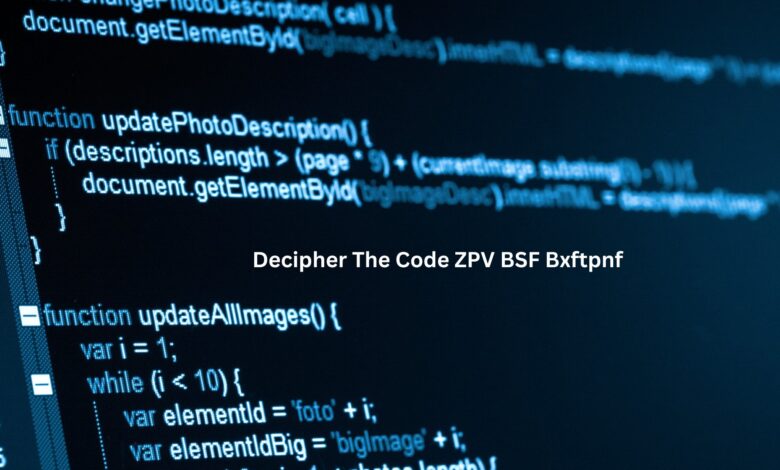Cracking the Code Decipher The Code ZPV BSF Bxftpnf Transforms into ‘YOU ARE AWESOME’

Introduction
The thrill of cracking a code, uncovering hidden messages, and revealing meaningful secrets has captivated humans for centuries. From ancient cryptographic methods to modern encryption, decoding messages has become a fascinating blend of science, logic, and creativity. In this article, we’ll take an in-depth journey into deciphering the code “Decipher The Code ZPV BSF Bxftpnf” unraveling its meaning, understanding the process of decoding, and exploring the broader world of cryptography.
What Is Cryptography?
Decipher The Code ZPV BSF Bxftpnf is the science of encrypting and decrypting messages to keep information secure. Its origins can be traced back to ancient civilizations, where rulers and military leaders developed rudimentary methods to communicate secretly. Today, cryptography is an essential part of our digital lives, ensuring privacy and security in areas like banking, communication, and data sharing.
The Two Main Branches of Cryptography
- Symmetric Key Cryptography: Both the sender and receiver use the same key to encrypt and decrypt the message. This is faster but requires secure key sharing.
- Asymmetric Key Cryptography: Two keys are used – a public key for encryption and a private key for decryption. This is widely used for secure internet communication.
Understanding Substitution Ciphers
One of the simplest forms of cryptography is the substitution cipher. In this method, each letter in the plaintext is replaced with another letter or symbol according to a fixed rule. Substitution ciphers are easy to learn and fun to experiment with, making them a great starting point for code enthusiasts.
The Caesar Cipher: A Popular Substitution Cipher
The Caesar cipher, named after Julius Caesar, is one of the earliest and most well-known substitution ciphers. It involves shifting each letter of the alphabet by a certain number of places. For example, with a shift of 3:
- A → D
- B → E
- C → F
To decode the message, the process is reversed, shifting the letters backward by the same number.
Decoding “Decipher The Code ZPV BSF Bxftpnf”
Let’s tackle the code “ZPV BSF BXFTPNF” step by step using cryptographic techniques, starting with the Caesar cipher.
Step 1: Breaking the Code into Segments
The code “ZPV BSF BXFTPNF” is divided into three groups:
- ZPV
- BSF
- BXFTPNF
The grouping suggests these are separate words encoded using a substitution method.
Also read: Maîtrisez les Secrets du Jeu Cemantix pour Gagner
Applying the Caesar Cipher
The Decipher The Code ZPV BSF Bxftpnf is often the first approach for decoding such messages. By testing different shifts, we aim to match the encoded letters with plausible words.
Step 2: Testing a Shift of -1
A backward shift of 1 is a logical starting point:
- Z → Y
- P → O
- V → U
This changes “ZPV” into “YOU.”
Next, we decode “BSF”:
- B → A
- S → R
- F → E
“BSF” becomes “ARE.”
Finally, we decode “BXFTPNF”:
- B → A
- X → W
- F → E
- T → S
- P → O
- N → M
- F → E
“BXFTPNF” transforms into “AWESOME.”
Step 3: The Decoded Message
Combining the decoded words, the message reads:
“YOU ARE AWESOME.”
This uplifting statement illustrates how simple Decipher The Code ZPV BSF Bxftpnf techniques can create hidden yet meaningful messages.
The Broader Applications of Substitution Ciphers
Substitution ciphers, though straightforward, have historically been used for secure communication. They are also widely used today in educational tools, puzzles, and recreational cryptography.
Examples of Substitution Cipher Usage
- Military Communications: Ancient armies used substitution ciphers to send tactical messages.
- Modern Puzzles: Popular puzzles like crosswords or escape room challenges often include substitution ciphers.
- Language Learning: Substitution ciphers are an engaging way to learn new alphabets and letter patterns.
Alternative Cryptographic Techniques
While the Caesar cipher successfully decoded “Decipher The Code ZPV BSF Bxftpnf,” other cryptographic methods might also be applicable. Let’s explore a few alternatives.
The Vigenère Cipher
The Vigenère cipher is a polyalphabetic cipher that uses a keyword to shift letters. Each letter in the keyword determines the shift for a corresponding letter in the plaintext. For example, if the keyword is “KEY”:
- Plaintext: HELLO
- Ciphertext: RIJVS
While more complex than the Caesar cipher, the Vigenère cipher offers stronger encryption.
Frequency Analysis
Frequency analysis examines the frequency of letters or groups of letters in the ciphertext. Since certain letters appear more often in English (like ‘E’ or ‘T’), this method can help identify likely substitutions.
Transposition Ciphers
Unlike substitution ciphers, transposition ciphers rearrange the letters of the Decipher The Code ZPV BSF Bxftpnf according to a pattern. For example:
- Plaintext: HELLO
- Ciphertext: LOLEH
This method often complements substitution ciphers for added complexity.

The Fascination with Hidden Messages
Why do hidden messages like “Decipher The Code ZPV BSF Bxftpnf” intrigue us? The answer lies in our innate curiosity and love for problem-solving. Decoding ciphers taps into our analytical and creative minds, offering both intellectual challenges and emotional rewards.
The Psychological Appeal
- Sense of Accomplishment: Solving a code provides a feeling of mastery and intelligence.
- Connection to History: Cryptography connects us to historical events, like the decoding of the Enigma machine in World War II.
- Entertainment Value: Puzzles and codes are a staple of books, movies, and games, captivating audiences worldwide.
The Role of Cryptography in Modern Society
In today’s world, cryptography extends far beyond puzzles and hidden messages. It plays a crucial role in securing our digital interactions and protecting sensitive information.
Key Applications of Cryptography
- Online Security: Cryptographic algorithms safeguard online transactions and communications.
- Data Encryption: Sensitive data is encrypted to prevent unauthorized access.
- Blockchain Technology: Cryptography underpins blockchain systems, ensuring secure and transparent transactions.
Everyday Uses of Encryption
- Messaging Apps: End-to-end encryption ensures private conversations.
- Banking: Secure encryption protects financial data during online transactions.
- Healthcare: Patient records are encrypted to comply with privacy regulations.
Exploring the Evolution of Cryptography
From ancient scrolls to modern algorithms, Decipher The Code ZPV BSF Bxftpnf has undergone remarkable evolution. Understanding its history enhances our appreciation for its complexity and importance.
Ancient Cryptography
- Egyptian Hieroglyphs: Early forms of cryptography appeared in the form of hidden messages in hieroglyphs.
- Roman Ciphers: The Caesar cipher was a revolutionary method in its time.
The Renaissance Period
The invention of the Vigenère cipher during the Renaissance marked a significant advancement in cryptographic techniques.
Cryptography in the Digital Age
With the advent of computers, cryptography has reached unprecedented levels of sophistication. Algorithms like RSA and AES provide robust security for modern needs.
Why Decoding Matters
The act of Decipher The Code ZPV BSF Bxftpnf messages goes beyond mere entertainment. It sharpens critical thinking, promotes problem-solving skills, and fosters an understanding of language and logic.
Educational Benefits
- Logical Thinking: Analyzing patterns and testing solutions strengthens logical reasoning.
- Linguistic Skills: Decoding requires attention to language structure and syntax.
- Historical Knowledge: Exploring cryptographic history enriches cultural and historical understanding.
Conclusion
Deciphering “Decipher The Code ZPV BSF Bxftpnf” revealed the heartwarming message “YOU ARE AWESOME.” This exercise highlights the elegance and accessibility of substitution ciphers like the Caesar cipher while emphasizing the broader importance of cryptography in our lives.
The journey from encoded text to meaningful message is a testament to human ingenuity and curiosity. Whether for fun, education, or security, the power of cryptography continues to inspire and protect us in countless ways.





